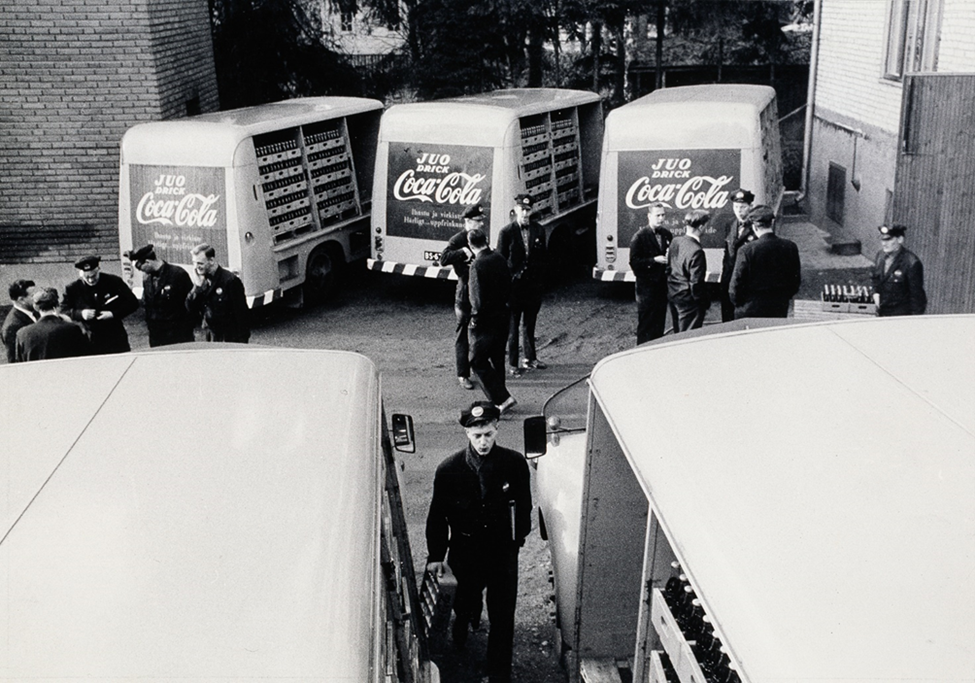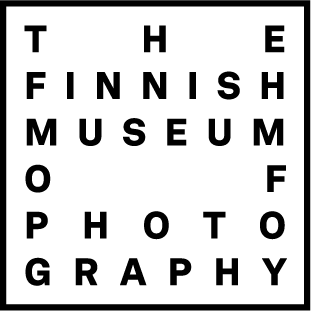
The first image in K-G Roos’s documentary photography book, Ihmisten Helsinki, is of a large group of Coca-Cola delivery men preparing for their workday. This single photograph creates a juxtaposition to the other images of the chapter entitled “Parades”, breaking away from past traditions. But how did Coca-Cola show up in the streets of Helsinki at this exact moment of epic visibility?
It was the summer of 1952, and Finland had recently made its final war reparation payment to the Soviet Union, yet the visible evidence of the war was all around and fresh in the consciousness of society. Sugar was still being rationed and not fluidly available, as it was in the United States of America. Yet, it was the summer olympics, Helsinki was hosting, and the world was watching Finland. The streets were alive with the excitement of a brighter future, and everyone was involved in the preparations.
Under the code name “Operation Muscle”, Coca-Cola donated 30 000 cases of Coke (720 000 bottles), along with 150 000 branded souvenirs, and six delivery trucks (two of which were refrigerated) to the Finnish war veterans (Sotainvalidien Veljesliitto).[1] In Roos’ photograph five of these trucks can be seen fully loaded with crates of Coke bottles. In addition, the injured war veterans built thirty-six portable cola sales stands, and these stands became the social hubs of the 1952 Summer Olympic Games.
It can easily be imagined that this new mission gave these men a refreshed feeling of importance and purpose, after a long and traumatizing wartime. The feeling of excitement and comradery is almost tangible in Roos’ photograph, as one views the men gathering in groups to plan their workday. In the photograph the veterans are dressed in Coca-Cola work uniforms. Appearing as decorated cola servicemen, with the visual authority of police officers. Even the jacket labels were placed on the left breast as military metals are placed. From here the veterans and their families hit the streets of Helsinki with the new bubbly cola and the slogan, “Drink Coca-Cola, become infatuated and refresh yourself”, like a miracle drug Coke was here.
It represented something new, something refreshing and something greatly desired by the people; a refresh from the hard times of war and famine. And it was a massively successful public relations campaign by Coca-Cola. Only years later did it bring with it health concerns over the risks of sugar and cola consumption. When Roos captured this striking moment in Finnish lemonade history, it was more than soda hitting the streets, much more, it was an ideological shift towards global capitalism. He undoubtedly saw this shift in time for what it was when he documented it back in 1952.
Written by Cynthia Blanchette
Resources:
- Coca-Cola Finland, SOTAINVALIDIT TOIVAT COCA‑COLAN SUOMEEN, https://www.coca-cola.fi/yritys/suomessa/sotainvalidit-toivat-coca-colan-suomeen
- The Coca-Cola Company, Coca-Cola and the Olympic Games, 2008. http://mb.cision.com/Public/MigratedWpy/86051/733602/b2f6eeb214290b6d.pdf
- Roos, K-G, Donner, Jörn: Ihmisten Helsinki, Werner Söderström Oy, 1961.
- Suomen Valokuvataiteen Museo: K-G Roos, 2012.
- Vanhustyön Keskusliitto Ry, Kuvalista: Coca-Cola Auto, https://www.vahvike.fi/kuvat/kuvayhteenveto?hakutermi=ammatit&print=1
